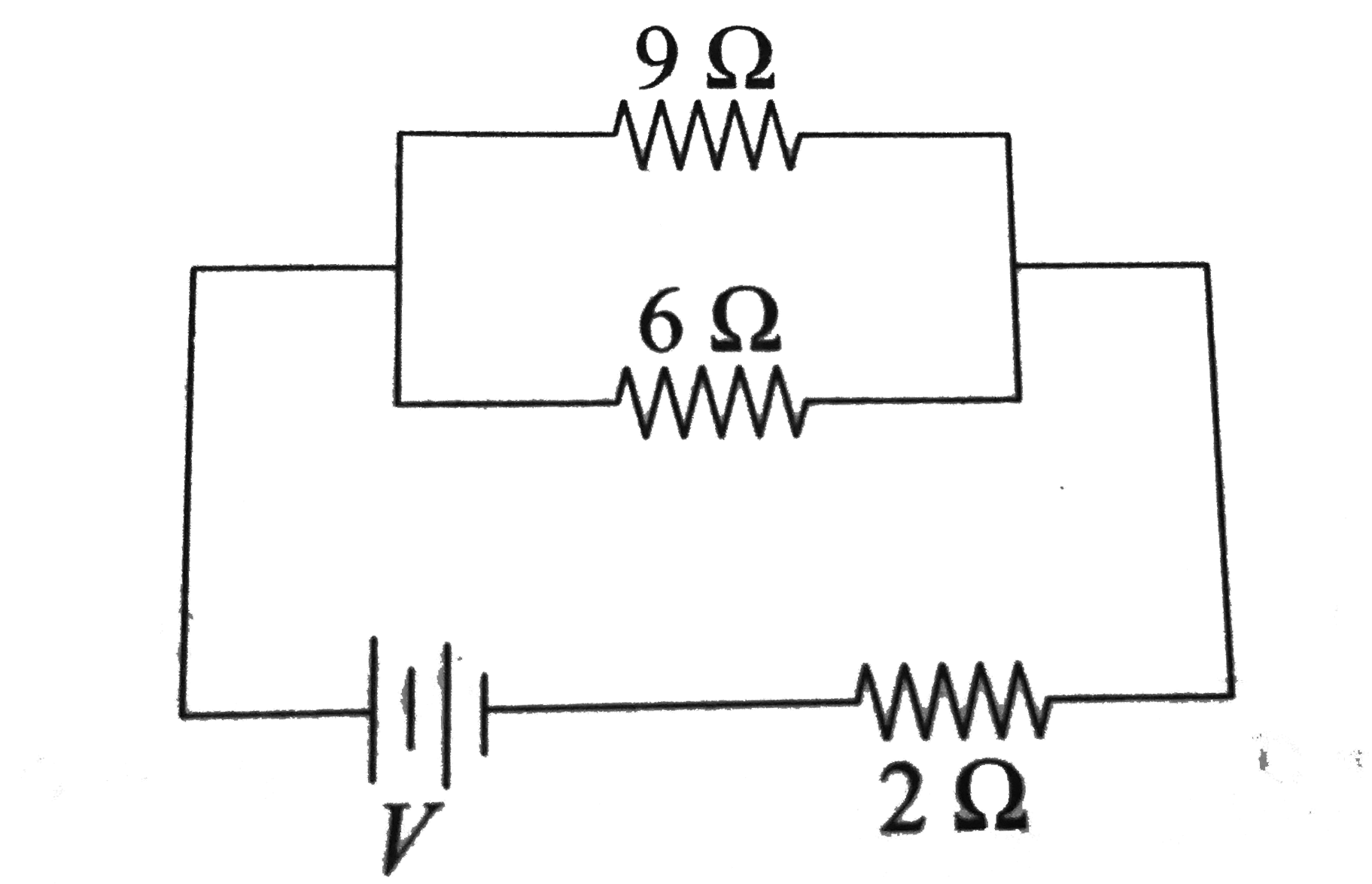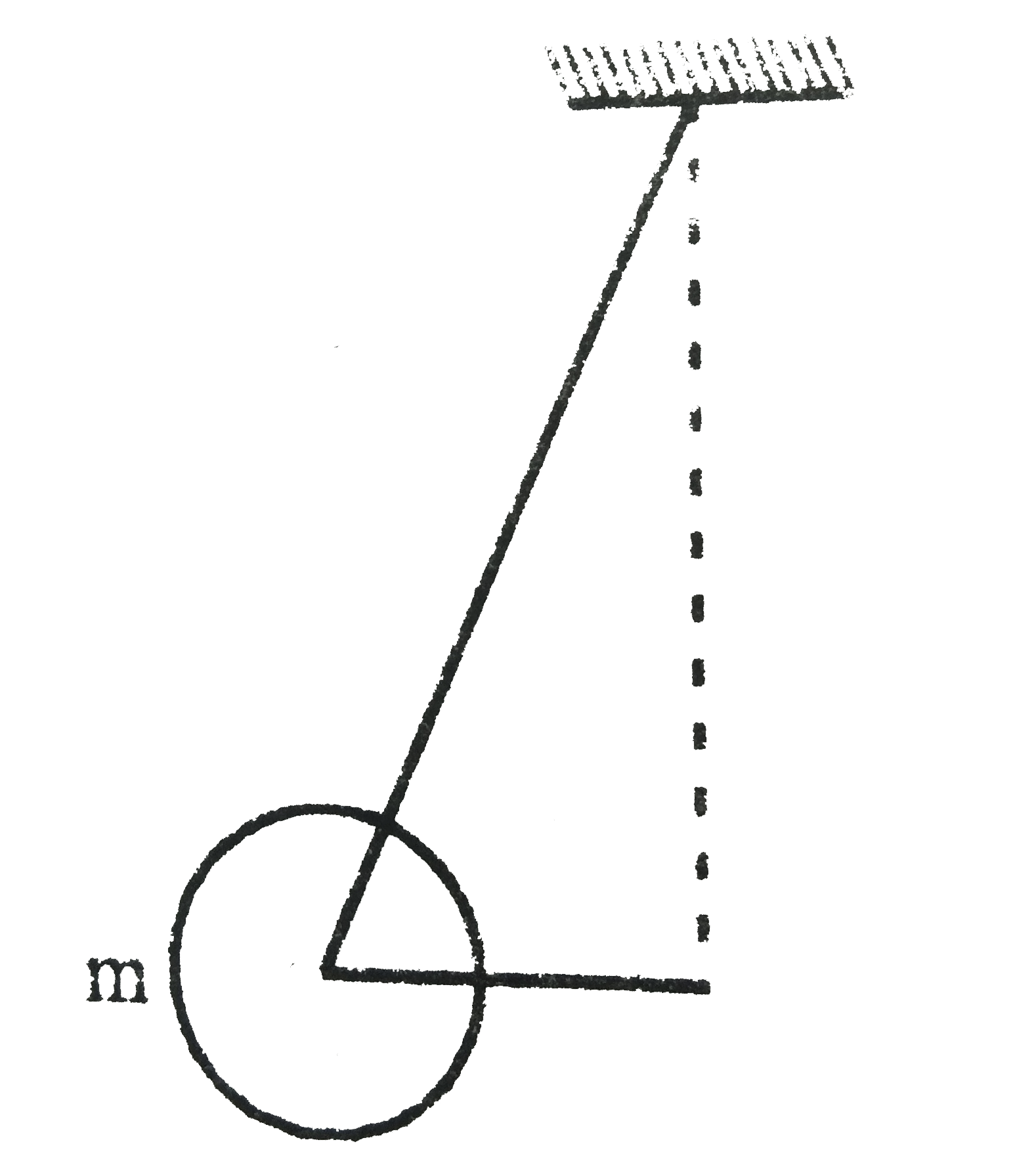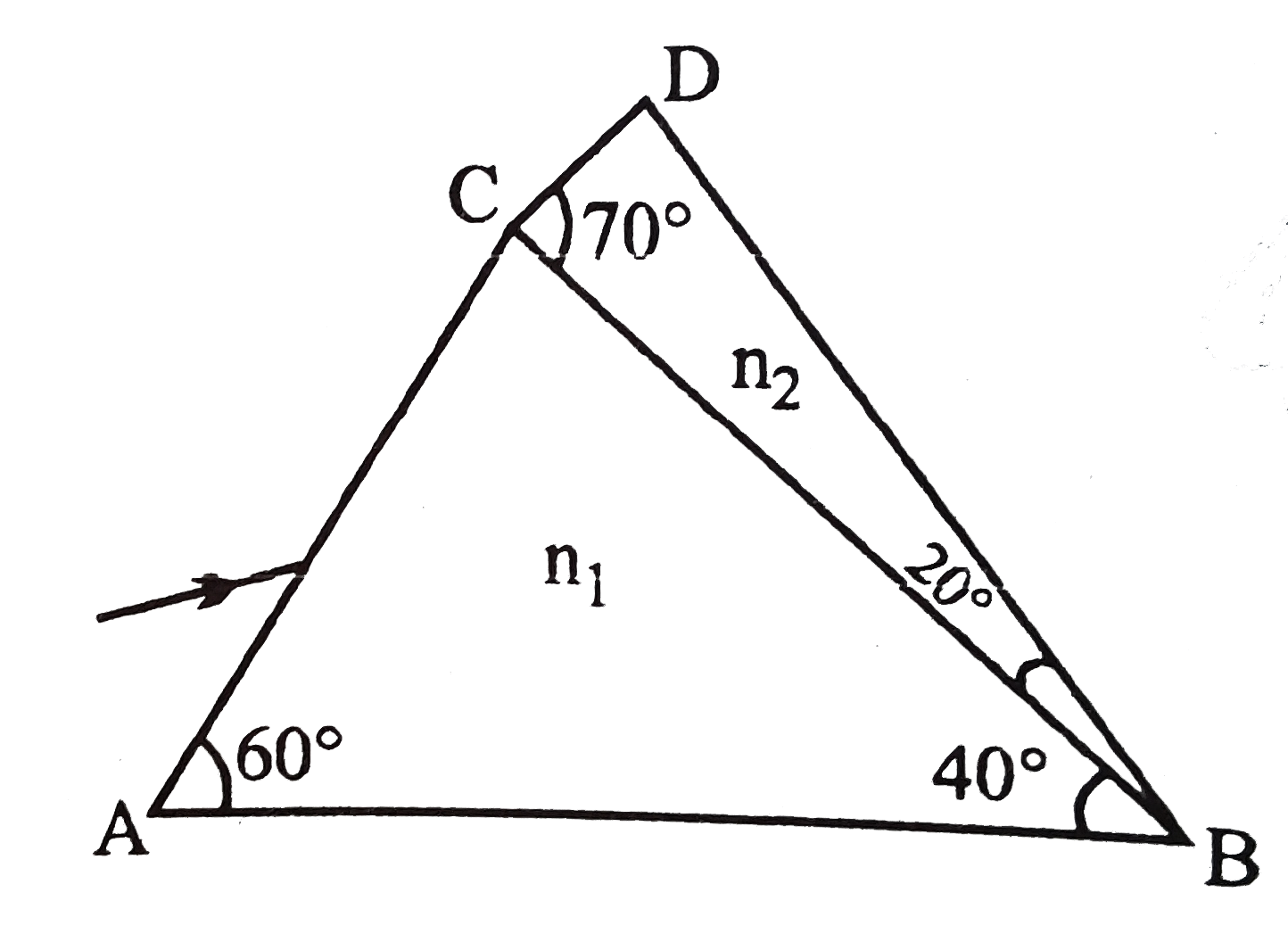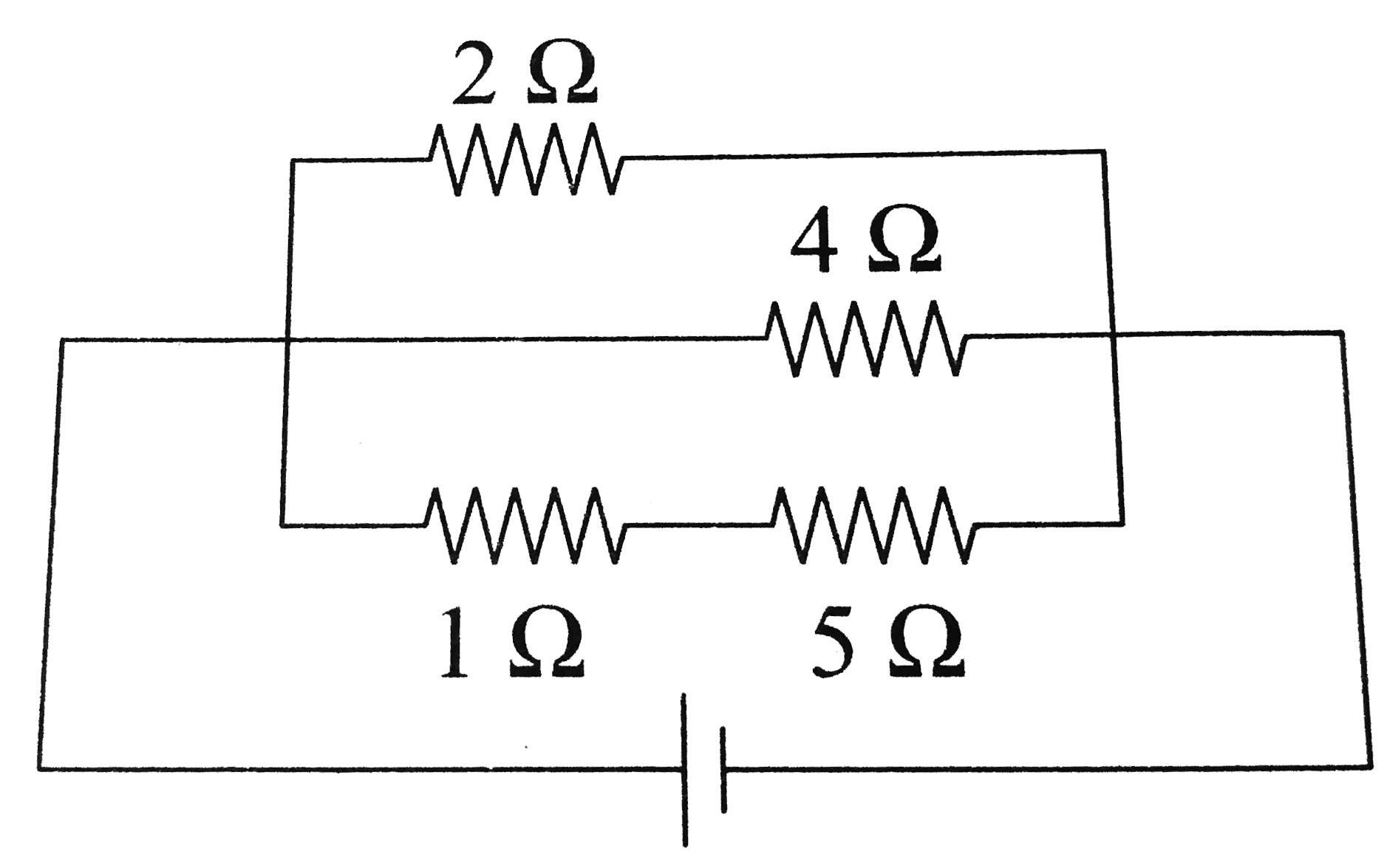If power dissipated in the 9Ω resistor in the resistor shown is 36W, the potential difference across the 2Ω resistor is
 Solution in Gujrati
Solution in Gujrati
The correct Answer is:−mv2sin(v2)Rtˆi+m(v2cosv2Rt−v1)ˆj

→v2=(−v2sinωtˆi+v2cosωtˆj) and →v1=v1ˆj
→v21=→v2−→v1=−v2sinωtˆi+(v2cosωt−v1)ˆj
→p21=m→v21=−mv2sinωtˆi+m(v2cosωt−v1)ˆj
where ω=v2R
Topper's Solved these Questions
- CURRENT ELECTRICITYBOOK - ALLEN CHAPTER - CURRENT ELECTRICITYEXERCISE - EX.II
66 Videos
- CURRENT ELECTRICITYBOOK - ALLEN CHAPTER - CURRENT ELECTRICITYEXERCISE - EXERCISE-V A
20 Videos
- CIRCULAR MOTIONBOOK - ALLEN CHAPTER - CIRCULAR MOTIONEXERCISE - EXERCISE (J-A)
6 Videos
- GEOMETRICAL OPTICSBOOK - ALLEN CHAPTER - GEOMETRICAL OPTICSEXERCISE - subjective
14 Videos
Similar Questions
In the Bohr's model of hy drogen atom, the electron moves around the nucleus in a circular orbit of radius 5×10−11m. Its time period is 1.5×10−16s. The current associated with the electron motion is:-
View SolutionTwo metallic s pheres of radii R1 and R2 are connected b y a thin wire. If +q1~and+q_(2) are the charges on the two s pheres then
View SolutionA ball of mass (m)0.5kg is attached to the end of a string having length (L)0.5m. The ball is rotated on a horizontal circular path about vertical axis. The maximum tension that the string can bear is 324N. The maximum possible value of angular velocity of ball (radian/s) is -
 .
.
View SolutionA prism of refractive index n1 & another prism of reactive index n2 are stuck together without a gap as shown in the figure.The angle of the prisms are as shown. n1&n2depend onλ,the wavelength of light according to n1=1.20+10.8×104λ2&n2=1.45+1.80×104λ2 where λ is in nm.

(i)Calculate the wavelength λ0for which rays incident at any angle on the interfaceBCpass through without bending at that interface.
(ii) for light of wavelength λ0,find the angle of incidencei on faceACsuch that the deviation produced by the combination of prism is minimum.
View SolutionA current of 3A flows through the 2Ω resistor as shown in the circuit. The power dissipated in the 5Ω resistor is

View SolutionIf power dissipated in the 9 Omega resistor in the resistor shown is 36 W , the potential difference across the 2 Omega resistor is
View SolutionThe power dissipated 6Ω resistor is

View SolutionA current of 3 A flows through the 2Ω resistor shown in the circuit. The power dissipated in the 5 Ω resistor is

View SolutionA current of 3A flows through the 2Ω resistor as shown in the circuit. The power dissipated in the 5Ω resistor is

View SolutionIf power dissipated in the 9 Omega resistor in the resistor shown is 36 W , the potential difference across the 2 Omega resistor is
View SolutionPower dissipated across the 8 Omega resistor in the circuit shown here is 2 w. The power U dissipated in watt units across the 3Omega resistor is .
View SolutionIf the power dissipated in the 27Ω resistor in the circuit shown is 108 watt, the potential difference across the 4Ω resistor is
View SolutionA cell of e.m.f. 2 V and internal resistance 1.2 Omega is connected to an ammeter of resistance 0.8 Omega and two resistors of 4.5 Omega and 9 Omega as shown in Fig. find : the potential difference across the 4.5 Omega resistor.
View SolutionIn the circuit shown in Fig., the resistors of 2Omegaand3Omega together dissipate 30 W of power. The current through the 4 Omega resistor is
View SolutionA current of 3A flows through the 2Ω resistor as shown in the circuit. The power dissipated in the 5Ω resistor is

View Solution

